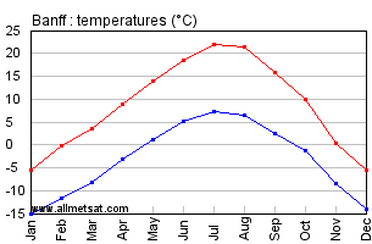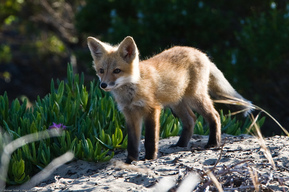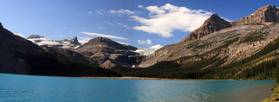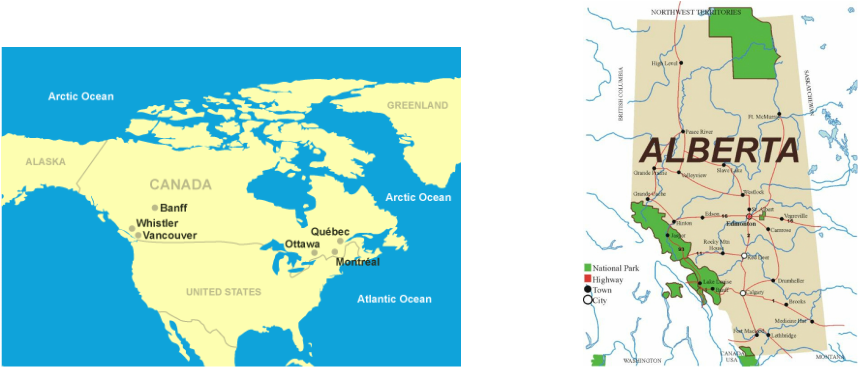Banff National Park - Boreal Forest Biome
Banff National Park is located in Alberta, Canada. This region hosts part of the boreal forest, or taiga, which stretches across Canada, to Russia. Sadly, this region has had some environmental issues lately due to human interaction. We hope your tourism organization chooses our tour to add to your organization's offerings!
Background
Climate

The average temperatures in the Banff boreal forest vary monthly:
In this area of the boreal forest, precipitation falls in the form of rain, snow, and hail. Throughout the year, the amount of precipitation varies from 20 to 200 centimeters.
- January - Average High: 23.7 F° Average Low: 6.6 F°
- February - Average High: 31.1 F° Average Low: 11.1 F°
- March - Average High: 40.1 F° Average Low: 18.9 F°
- April - Average High: 49.1 F° Average Low: 27.5 F°
- May - Average High: 58.1 F° Average Low: 35.1 F°
- June - Average High: 67.1 F° Average Low: 41.7 F°
- July - Average High: 73.2 F° Average Low: 45.3 F°
- August - Average High: 72.1 F° Average Low: 44.4 F°
- September - Average High: 61.3 F° Average Low: 36.9 F°
- October - Average High: 50.2 F° Average Low: 29.7 F°
- November - Average High: 32.4 F° Average Low: 16.9 F°
- December - Average High: 22.8 F° Average Low: 8.1 F°
In this area of the boreal forest, precipitation falls in the form of rain, snow, and hail. Throughout the year, the amount of precipitation varies from 20 to 200 centimeters.
Sun and Clouds
Winter weather in this region of the boreal forest is cold and last for many months, while summer weather is warm/cool, and tends to last for a very short period of time. During the summer, the sun is up for around 17.5 hours during the day, while in the fall it only stays out for about 12.25 hours. In the winter, the sun is normally up for 7.75 hours, and then stays out for around 12.25 hours a day when spring comes around.
Biotic and Abiotic Factors in the Banff National Park
Biotic and abiotic factors are the living and nonliving things in an ecosystem.
Biotic Factors

- Bats, shrews, pikas, hares, and rodents
- Coyote, gray wolf, red fox
- Black bear and grizzly bear
- Weasels
- Cougars and Canada lynx
- Elk, various deer, moose, caribou, goat, sheep, bison
- Salamander, toad, frog, snake
- Sculpin, trout, minnow, sucker, trout-perch, cod, livebearer, stickleback, cichlid
- Mountain pine beetle
- Wildflowers
- Whitebark pine
Abiotic Factors

- Vermillion Lakes, Peyto Lake, Lake Louise, Bow Lake, Hector Lake, Moraine Lake
- Columbia Icefield, Crowfoot Glacier, Cave and Basin Hot Springs, Banff Upper Hot Springs
- Parker Ridge
- Bow Falls
- Podzol soil

